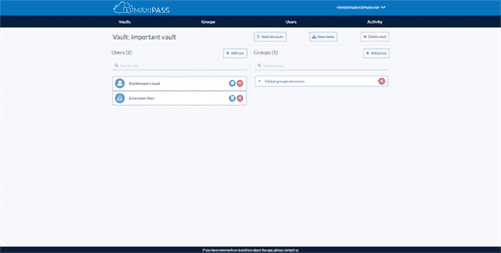While dealing with devoted resort software program development teams, specify all of the nuances associated to tech support in the contract agreement. When you design a lodge administration system, remember that numerous daily processes require switching between totally different functions, which isn’t handy and prone to human error. A property administration system (PMS) aggregates the functions of a number of functions, removes mistakes, automates duties, and permits for seamless workflows. It integrates with third-party providers to match completely different requirements, and that’s the reason PMS improvement matters.
Streamline the customer expertise by converging your resort’s providers in a single app, from ordering concierge services to booking a golf course with one tap. A branded app will let your visitors benefit from the leisure expertise at your resort. Evince Development is a group of passionate and top-rated handpicked professionals providing wonderful software program solutions to help businesses thrive in right now’s Digital landscape.
Leverage bespoke journey and hospitality software growth providers that cater to the area of interest visitor expertise factor of the business. Use cutting-edge tech stacks to create travel distribution methods, cell hotel purposes, contactless hospitality options, and more on your clients. Years of our historical past and expertise enable us to deliver hanging outcomes for those involved in the hospitality industry.
Casino Management Techniques
Encryption, secure payment gateways, and compliance with business regulations are a few of the methods these options ensure knowledge safety. Taking care of your software options, our specialists apply their experience in testing and QA, making certain throughout that each detail of your application works as it’s imagined to. We have labored with Belitsoft staff over the past few years on tasks involving much
Set up organization-wide requirements which are simple to implement, be taught, and optimize utilizing digital workflows and studying management options for group training. Reduce paper consumption and pace up your document workflows and organization 10x to economize, enhance group experience, and streamline accounting management. Our consultants build admission control systems with handheld and stuck scanning gadgets to support RFID wristbands and cards, barcode & QR code scanning, biometric validation, cell ticket validation, and other entry methods. Chetu can build a totally scalable, encrypted, and safe suite of management tools for all casino operations from managing slots and stay tables to back-of-the-house surveillance and key player focusing on. I am writing to specific my deepest gratitude and appreciation for the exceptional work you could have accomplished as a software developer on our Airbnb integration project. Your dedication, skills, and dedication have truly made a major impression, and I wish to commend you on your excellent efforts.
As a outcome, we now have applied a technical design workshop to create the preliminary vision of the answer architecture. We provide journey administration solutions tailor-made to satisfy the precise wants of your organization, streamlining the travel planning and expense management course of. They are at all times willing to do whatever is necessary to assist growth and customer support efforts.
Restaurant Stock Management
Other privileges that allow for enhanced client expertise include booking resort restaurant places, ordering additional providers, and extra. Such opportunities are especially critical for Gen Z reps. Human communication between purchasers and workers decreases with such benefits, which outcomes in a less formal environment. Hotel software program growth stands for extra time and sources that allow concentrating on strategic planning, fostering consumer relationships, and looking for various revenue streams. Being part of the hotel’s management or its proprietor, you would possibly think about bringing your business again to life, and hotel software improvement is the most effective factor you can do. This submit by OpenGeeksLab will assist you to study more about how lodge software development can reinvent your corporation. Chetu offers personalized amusement park & points of interest administration software program options built with tailored modules for every little thing from preventative park maintenance and repairs to ticketing and visitor administration.
of high quality assurance tests. Leverage superior tracking capabilities to automate duties and generate tracking numbers for receipts and invoices. Numerous POS terminals result in a requirement for corresponding services to deal with transactions.
Keeping your small business docs in Excel or on paper is quite threatening, and these choices are susceptible to hacking. Storing the data about guests in the digital system integrated with a CRM is a means better determination. Your staff then could have full management of the delicate data with the minimized threat of knowledge hacking or loss. Having a native lodge software development app provides quick, regular updates on rooms’ availability with photographs. Computools holds ISO certification for Quality management systems, assembly international requirements for safety, customer focus, and a process-based method in software development. We’ll provide a personalized system, technical expertise, ongoing help, time-saving benefits, and knowledge analytics capabilities, in the end resulting in a more environment friendly and efficient hotel HR system.
Making positive that your last product works well and meets your corporation goals is feasible by way of a comprehensive evaluation. As Hotel Technology News reviews, using AI for hospitality is now not a matter of acquiring a aggressive advantage but quite a must for individuals who wish to stay on this enterprise. Still, 49% of businesses that took half in a survey by CoStar replied that their business ranks in the center at a grade of “C” for AI implementation. Learn how Computools supported SmartCity innovation, producing a feature-rich app with the worldwide audience who profit from geospatial search, social media integration, and 3D navigation. Get another channel to communicate with prospects from completely different places, making your services available district-wide, county-wide, state-wide, and even nation-wide, relying on the dimensions of your organization.
Increasing model loyalty is an important key to administration success, and that’s what resort software program growth is for. Such actions as serving guests with their chosen tea or coffee or sending gift playing cards considerably interact consumer loyalty. Wynn turned to our staff to create an essential lodge app, together with an array of booking options, guest companies, and a common digital booklet for the resort. We present journey information change administration options to collaborate with completely different sets of journey stock and successfully handle business offerings. We offer travel distribution options and journey agent software to increase your reach and connect with extra clients. Efficiently book tours and accommodations with user-friendly, integrated ticket and hotel reserving options.
Positiwise’s Inventory Administration Software Program For Motels – Simple, But Loaded With Options
Simplify the booking course of for friends and workers with user-friendly interfaces and customizable options. Streamline the reservation course of and gain priceless insight into occupancy. We try to offer tailor-made journey and Hospitality know-how solutions by aligning our methods with your business aims and coupling them with befitting technology. Travel and Hospitality Software Development Services incorporate robust safety features to safeguard information.
- Using blockchain, developers can streamline processes and make them more clear, rising credibility.
- Harness the flexibility to empower hospitality industry companies to thrive in right now’s fast-paced digital landscape.
- Belitsoft has been the driving force behind several of our software program development projects inside the last few years.
Such drones may function robotic receptionists that will follow friends and obey their instructions. API-first strategy is another “hot” matter; it ensures integration between totally different hotel tech techniques. Without employees’ participation, HMS communicate https://okade.ru/selhoztehnika/monokulturnoe-selskoe-hozyajstvo-nedostatki-i-negativnoe-vozdejstvie-na-okruzhayushhuyu-sredu.html with each other and trade functionalities and knowledge, and that’s why it matters for resort software builders. When you construct a hospitality app, remember that facilitating inside admin operations is essential.
Store4 Booking
This module ought to automate money transfers and retailer financial information in a single place. Besides, it assists with dealing with extra costs, corresponding to in-room services, Spa, gyms, animation, restaurants, bars, and extra. Computools’ company social accountability pertains to environmental, philanthropic, moral, and financial initiatives. Computools is always concerned in volunteer and charity initiatives and strives to make our world a better place.
Development 5: Direct Reserving Options
Maximize revenue and attain with strong journey distribution solutions that utilize superior technologies and industry-specific expertise to connect with extra online and offline customers. Solutions to help you improve your operations and customer experience and increase income by automating processes, managing stock, and providing real-time data and insights. In a world where customer satisfaction and operational effectivity are the keys to success, investing in innovative software program options is not only a selection; it’s a necessity. Embracing Travel and Hospitality Software Development is step one in the course of elevating your travel and hospitality business to new heights in today’s aggressive panorama.
Channel managers are tech that makes it potential to increase the reach, boost on-line visibility, as nicely as handle fees, availability, and bookings means less complicated. Track and cut back the need for human interaction in routine processes to get extra from your corporation while, at the identical time, reducing mundane actions/steps in your workers. Grow with the assistance of digital menus which are easy to learn, update, and share whereas increasing your customer base with extended supply choices to new city districts. Android app that permits for reserving keeps visitors informed on the latest information and extra.
With Intellectsoft’s impactful loyalty and reward options, it becomes simple to construct emotional commitments by encouraging your clients to adopt particular behaviors and attitudes. It is equally important for hospitality corporations to hard-wire the pursuit of such dedication into their operations. Providing OTA solutions to assist online journey firms improve their reach and revenue.












